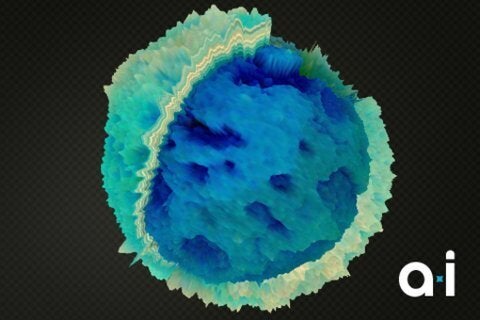
"Small objects, like the Walkman first and then the iPod, create bubbles of space around us that enable us to have a metaphysical space that is much bigger than our physical space."- Paula Antonelli
Architecture is meant to protect us, but it's more than that. At its best, it starts to create place. It responds to our existential needs, to our mind and body, Sean Coulter, the principal designer at Pugsley Simpson Coulter Architects, begins at the "Physical Architecture Meets Interaction Design" panel.
We're trying to quantify everything and leaving behind the qualities of space that we can create, Coulter explains. Take the Excalibur in Las Vegas -- it's a simulation of real architecture, based on castles in Europe. With simulated architecture, are we starting to have a simulated experience?
A building, Coulter continues, should absorb its context. A building that's in Austin and one that's in Vegas shouldn't have the same structure. It should respond to its surroundings so it isn't all just about aesthetics. Sure, cool-looking spaces are great, but do they really do something for the soul? Take Frank Gehry -- his buildings are amazing, Coulter says, but in different cities around the world, they look the same. If you start to solve metaphysical and cultural needs, then you're doing something more important.
Leonard Souza, the lead experience architect at UniversalMind/SpatialKey, and our interaction design expert, moves on the conversation on to more theoretical questions. Phenomenology is the study of the structure of experience. According to Heidegger, it's made up of the earth, sky, human and spirit. In games, for an experience to become transcendent, you need aesthetics, story, mechanics and technology, Souza says.
The way to find the sort of transcendence Coulter is looking for is to achieve "flow," which is explained in depth in the book "Flow: The Psychology of Optimal Experience." Simplistically, flow is when someone becomes one with an experience, whether that be contained in a game or a building.
This type of flow is present in "Snake the Planet!", which merges interaction design and architecture. According to the description:
Snake the Planet! takes the classic Snake game and adopts it to the MPU urban canvas. Each level is generated based on the architecture of the building it is projected onto. Windows, doors and signs become the boundaries and obstacles in the game as animated objects collide with and bounce off them using real-time physics simulation. The multiplayer game also has a Tron-like competitive element, where one player can intentionally block the others' path to win the game.
The key here is to engage the mind by altering perception in a space. There's still going to be the need for physical architects and interactive designers, Coulter says, but can the two work together to make a new kind of transcendent space, one we can feel truly engaged with?